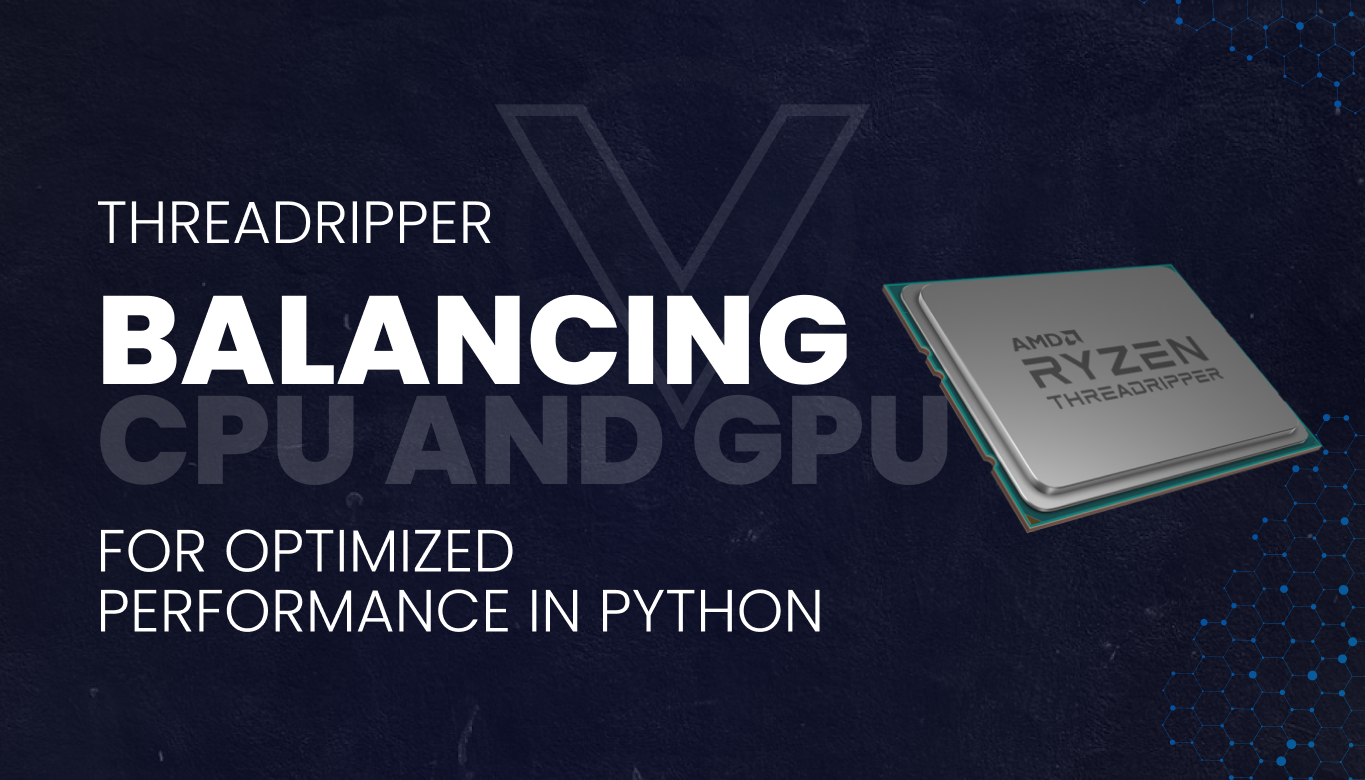Threadripper: Balancing CPU and GPU for Optimized Performance in Python

The rise of GPU-centric tasks in Python environments means a balanced computing setup is as important as ever. While a powerful GPU handles parallel processing tasks efficiently, a good CPU is necessary to prevent bottlenecks and ensure smooth performance. A common misconception is that a strong GPU can make up for a weak CPU, but this is not the case. A weak CPU can stall, creating delays that lower performance, regardless of the GPU's strength.
The real issue lies in the CPU's role in managing a program’s workflow, including memory management, I/O operations, and providing instructions to the GPU. When the CPU lags, it can't feed instructions to the GPU quickly enough, causing bottlenecks. This problem is especially true in Python environments, whose language limitations can worsen the bottleneck.
Why Does a Weak CPU Lead to Bottleneck?
In computing, the CPU and GPU work together. The CPU directs operations and sends instructions to the GPU for processing. However, when a CPU is weak or slow, it can't keep up with the GPU, causing a bottleneck. This means the GPU has to wait for the CPU to send instructions, which slows down the entire process.
Python environments can exacerbate this issue due to certain limitations. For instance, Python's Global Interpreter Lock (GIL) can further slow down the CPU, making the bottleneck issue more noticeable. The efficiency of running Python tasks largely depends on the CPU's capabilities. A stronger CPU can send instructions to the GPU faster, keeping the process running smoothly and ensuring better performance.
Introducing AMD’s Threadripper: A More Powerful CPU
The AMD Ryzen Threadripper 7000 Series and PRO 7000 WX-Series, built on the advanced "Zen 4" architecture, offer high core and thread counts. This design significantly alleviates CPU bottlenecks, especially in Python environments where the CPU often stalls due to the language's inefficiencies.
Threadripper's superior multi-core performance allows for more efficient instruction management, reducing the wait time for the GPU. This results in significantly better Python execution times and smoother operations across various computational scenarios.
Bridging the Gap with Vast.ai
Many individuals lacking access to high-performance CPUs like Threadripper may experience bottlenecks in their GPU-accelerated tasks. The inefficiencies of a weaker CPU can significantly slow down processing, making certain computational tasks a slog.
Vast.ai presents a viable solution to this problem. It provides a platform where users can rent high-performance GPU resources, which can be paired with superior CPU capabilities. By offering a gateway to better hardware resources, Vast.ai helps in overcoming the limitations imposed by less capable CPUs. Users can thus experience smoother, more efficient processing, enabling them to execute their tasks more effectively and in a timely manner. This way, Vast.ai plays a crucial role in alleviating the hardware constraints that many individuals face, bridging the gap between their current setup and the ideal computational environment.
Final Thoughts
A robust CPU is crucial for maximizing GPU utilization, particularly in Python environments where a weaker CPU can cause bottlenecks. The AMD Ryzen Threadripper significantly alleviates this issue with its high core and thread counts. For those without access to such high-performance CPUs, platforms like Vast.ai offer the opportunity to rent superior GPU and CPU resources, providing a practical solution to hardware limitations. Exploring these options can lead to better performance in GPU-centric tasks and a smoother computing experience overall.



